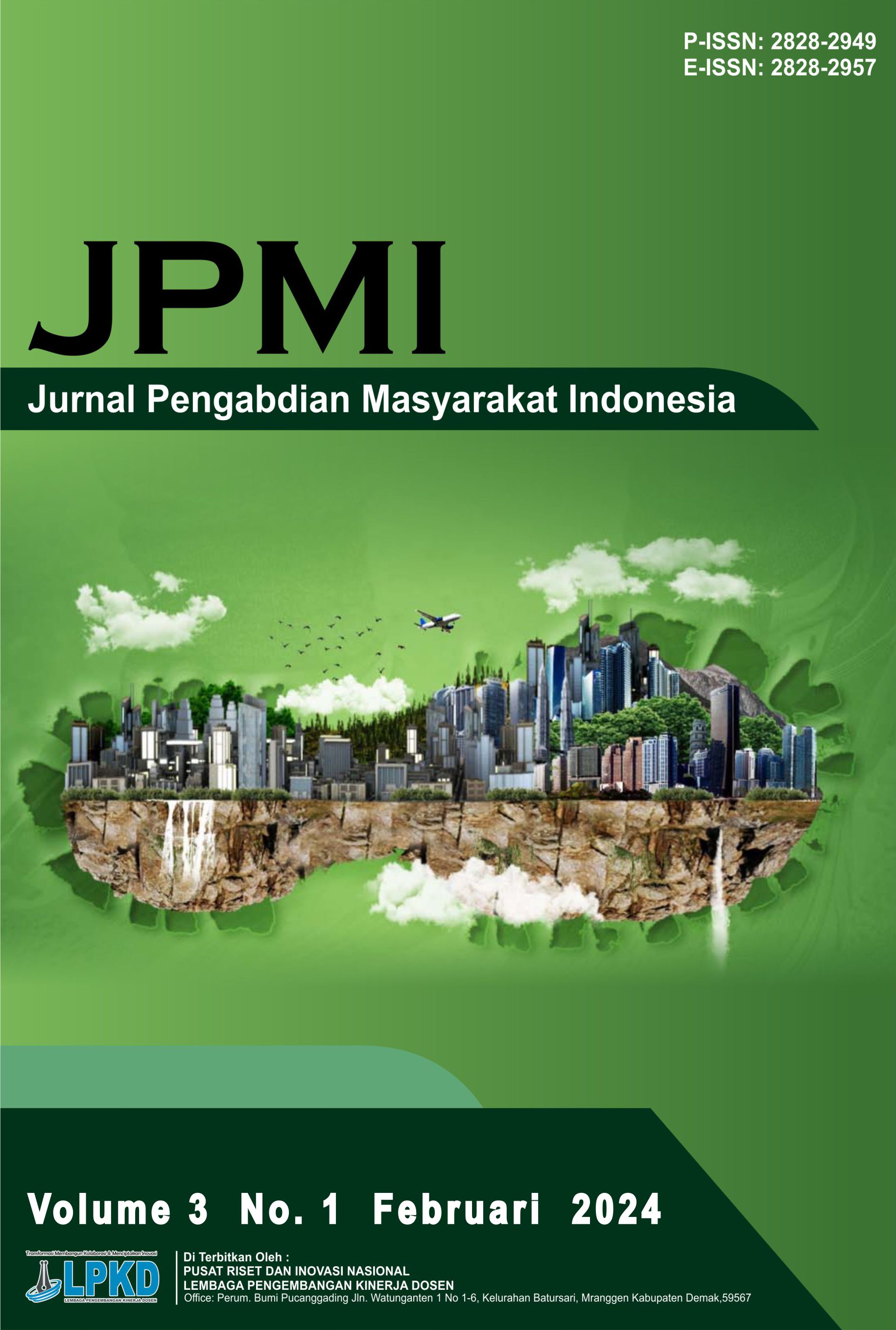Deteksi Perkembangan Anak Dengan DDST (Denver Development Screening Test) Di Poskeskel Pasir Gintung
DOI:
https://doi.org/10.55606/jpmi.v3i1.3444Keywords:
Children, DDST, DevelopmentAbstract
Introduction: The toddler years mark an important phase of fundamental growth that significantly shapes and influences a child's subsequent development. During this period, children's brains experience rapid growth which is often called the Golden Age. This phase is very important, so it requires careful attention to the child's growth and development to detect abnormalities as early as possible. Data collected at the Pasir Gintung Health Post shows that there were 12 children aged 2-4 years.Objectives: The main objectives include increasing parents' understanding in monitoring children's development, providing education regarding screening methods using the DDST approach, and actively monitoring children's development using the DDST method.Method: This Community Service was carried out using DDST (Denver Development Screening Test) measurements at the Pasir Gintung Health Post on Friday 5 January 2024. Results: The results of the DDST examination on 12 children showed that 10 children (83.4%) were declared normal, while 2 children (16.6%) had suspected development. Evaluation of children's overall growth and development includes gross motor skills, fine motor skills, speech, language, socialization and independence.Conclusion: These findings underline the important role of parental involvement in facilitating early detection of children's growth and development activities. Implementing a collaborative approach ensures that children's growth and development is a shared responsibility between parents and educators. It is very important for parents to be actively involved in monitoring their child's progress, encouraging the development of four main aspects: personal-social, adaptive-fine motor, language, and gross motor skills.
Downloads
References
Agusniatih, A., & Manopa, J. M. (2019). Keterampilan sosial anak usia dini: teori dan metode pengembangan. Edu Publisher.
Aisah, D. S., Ulfah, U., Damayanti, W. K., & Barlian, U. C. (2021). Manajemen PAUD Berdaya Saing Untuk Meningkatkan Mutu Pendidikan. Edumaspul: Jurnal Pendidikan, 5(1), 385-397.
Gustina, I. (2022). Modul Ajar Praktikum Asuhan Kebidanan Neonatus Bayi, Balita, dan Anak Prasekolah.
Hanifa, F., & Ramadhan, G. (2023). Peran Orang Tua dalam Membangun Kesiapan Sekolah Anak Usia Dini. TIFLUN: JURNAL PENDIDIKAN ANAK USIA DINI, 1(1), 14-18.
Mansur, A. R., & Andalas, U. (2019). Tumbuh kembang anak usia prasekolah. Andalas University Pres, 1(1).
Oktiawati, A., Itsna, I. N., Satria, R. P., & Ni’mah, J. (2020). Deteksi Dini Perkembangan Anak dengan DDST (Denver Development Screening Test) di RA/KBIT Siti Khodijah Slawi. JPKMI (Jurnal Pengabdian Kepada Masyarakat Indonesia), 1(2), 106-115.
Safitri, N. (2020). Pengaruh Senam Bebek Berenang Terhadap Kemampuan Motorik Kasar Pada Anak Usia 3-4 Tahun Di PAUD Permata Hati Kebonsari Tumpang Kabupaten Malang (Doctoral dissertation, Poltekkes RS dr. Soepraoen).
Susanto, A. (2021). Pendidikan anak usia dini: Konsep dan teori. Bumi Aksara.
Downloads
Published
How to Cite
Issue
Section
License
Copyright (c) 2023 JURNAL PENGABDIAN MASYARAKAT INDONESIA

This work is licensed under a Creative Commons Attribution-NonCommercial-ShareAlike 4.0 International License.









